Potrebujeme váš súhlas na využitie jednotlivých dát, aby sa vám okrem iného mohli ukazovať informácie týkajúce sa vašich záujmov. Súhlas udelíte kliknutím na tlačidlo „OK“.
ASTM F1113-87(2011)
Standard Test Method for Electrochemical Measurement of Diffusible Hydrogen in Steels (Barnacle Electrode)
Automaticky preložený názov:
Štandardná skúšobná metóda pre elektrochemické meranie difúzneho vodíka v oceli (Barnacle elektródy)
NORMA vydaná dňa 1.12.2011
Informácie o norme:
Označenie normy: ASTM F1113-87(2011)
Poznámka: NEPLATNÁ
Dátum vydania normy: 1.12.2011
Kód tovaru: NS-49175
Počet strán: 6
Približná hmotnosť: 18 g (0.04 libier)
Krajina: Americká technická norma
Kategória: Technické normy ASTM
Kategórie - podobné normy:
Anotácia textu normy ASTM F1113-87(2011) :
Keywords:
barnacle cell, current transients, diffusion, electrochemical, electrodes, high strength steels, hydrogen contact, hydrogen embrittlement, mobile hydrogen, ICS Number Code 25.220.20 (Surface treatment)
Doplňujúce informácie
| Significance and Use | ||||||||||||
|
The critical level of hydrogen in steels is that hydrogen which can build up to high concentrations at points of high triaxial stress causing embrittlement of the steel which can lead to catastrophic damage. This hydrogen can enter by various means, such as during pickling and electroplating. Means of reducing this hydrogen during processing are given in Specification B766 and Practices B183 and B242. It is still necessary, however, to know how effective these methods are. Though the ultimate reason for measuring this hydrogen is to relate it to embrittlement, this is not within the scope of this test method. As susceptibility to hydrogen embrittlement is a function of alloy type, heat treatment, intended use,and so forth, the tolerance for hydrogen must be determined by the user according to Method F519. Though the actual hydrogen concentration is not determined in this test method, the current densities have been shown to be useful as an indication of relative hydrogen concentrations (1-3), and therefore the degree of hydrogen embrittlement (1,2). Thus, measurements can be compared to one another (see 4.1 and 7.1). This test method is applicable as a quality control tool for processing (such as to monitor plating and baking) or to measure hydrogen uptake caused by corrosion. This test method is nondestructive; however, if there is a coating, it must be removed by a method which has been demonstrated to neither damage the steel nor introduce hydrogen to make the measurement. This test method is also applicable to situations producing continuous hydrogen permeation, such as high pressure hydrogen cylinders or corrosion processes. The results, however, would require a different treatment and interpretation (4). This test method is also applicable to small parts, such as fasteners. The technique, procedure, and interpretation would, however, have to be altered. Use of this test method on austenitic stainless steels and other face centered cubic (FCC) alloys would require different measurement times and interpretation of results because of differing kinetics. This test method can be used on slightly curved surfaces as long as the gasket defines a reproducible area. The area calculation must, however, be changed. |
||||||||||||
| 1. Scope | ||||||||||||
|
1.1 This test method covers the procedure for measuring diffusible hydrogen in steels by an electrochemical method. 1.2 This test method is limited to carbon or alloy steels, excluding austenitic stainless steels. 1.3 This test method is limited to flat specimens to which the cell can be attached (see 4.6 and 4.8). 1.4 This test method describes testing on bare or plated steel after the plate has been removed (see 4.4). 1.5 This test method is limited to measurements at room temperature, 20 to 25°C (68 to 77°F). 1.6 This standard does not purport to address all of the safety concerns, if any, associated with its use. It is the responsibility of the user of this standard to establish appropriate safety and health practices and determine the applicability of regulatory limitations prior to use. |
||||||||||||
| 2. Referenced Documents | ||||||||||||
|
Podobné normy:
Historická
1.2.2013
Historická
1.5.2013
Historická
1.2.2013
Historická
1.4.2011
Historická
1.4.2011
Historická
1.4.2011
Odporúčame:
Aktualizácia technických noriem
Chcete mať istotu, že používate len platné technické normy?
Ponúkame Vám riešenie, ktoré Vám zaistí mesačný prehľad o aktuálnosti noriem, ktoré používate.
Chcete vedieť viac informácií ? Pozrite sa na túto stránku.


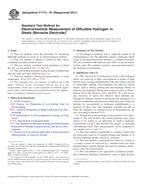
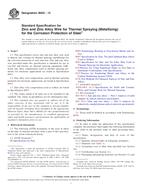 ASTM B833-13
ASTM B833-13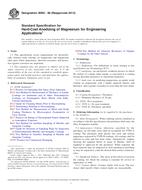 ASTM B893-98(2013)..
ASTM B893-98(2013)..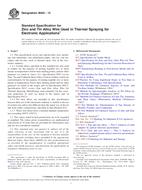 ASTM B943-13
ASTM B943-13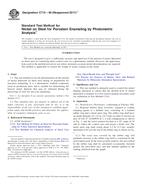 ASTM C715-90(2011)e1..
ASTM C715-90(2011)e1..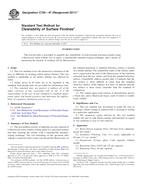 ASTM C756-87(2011)e1..
ASTM C756-87(2011)e1..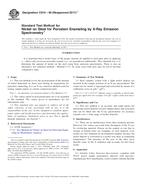 ASTM C810-90(2011)e1..
ASTM C810-90(2011)e1..
 Cookies
Cookies
